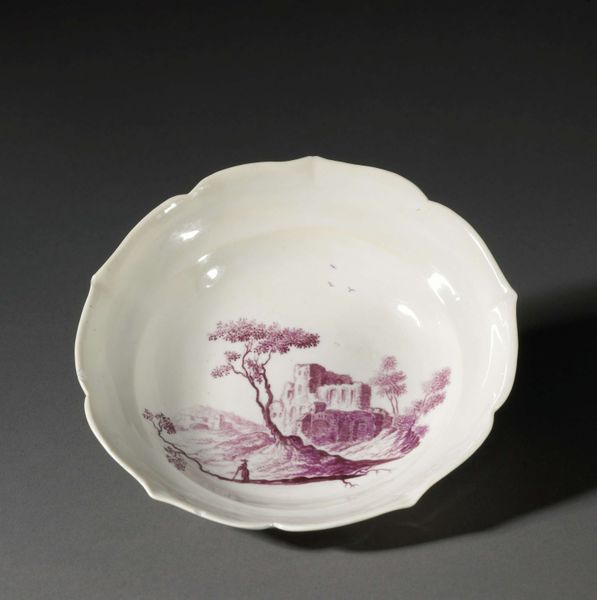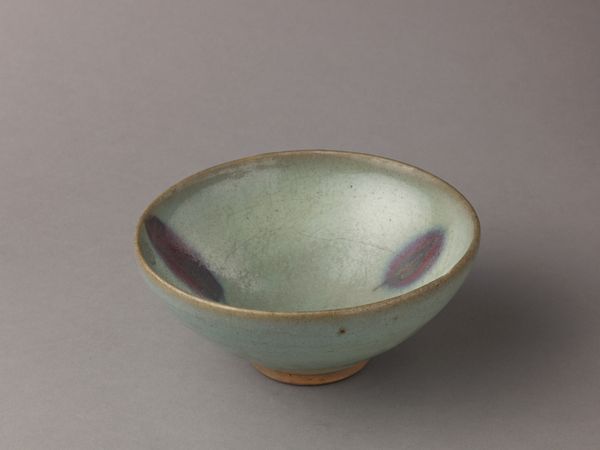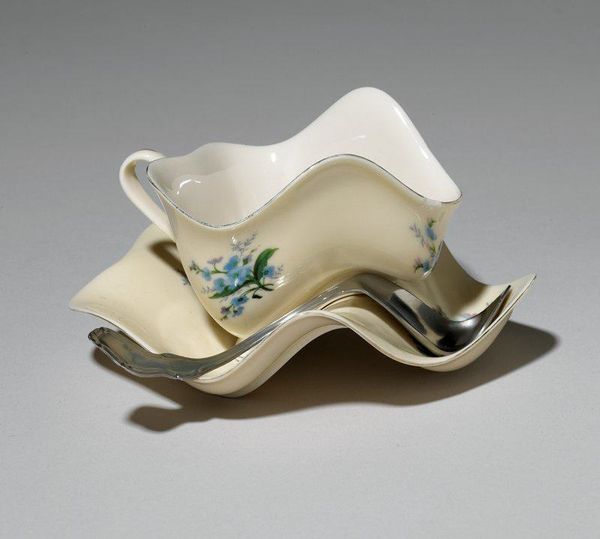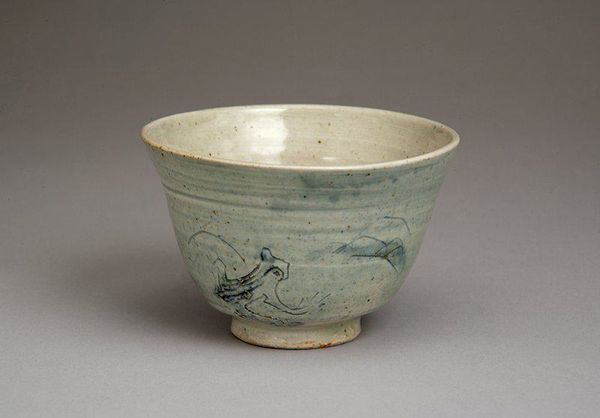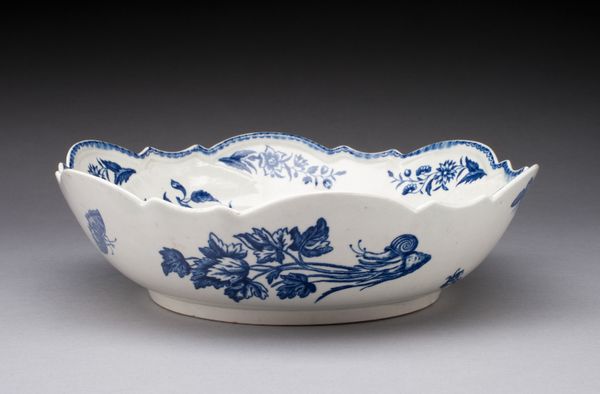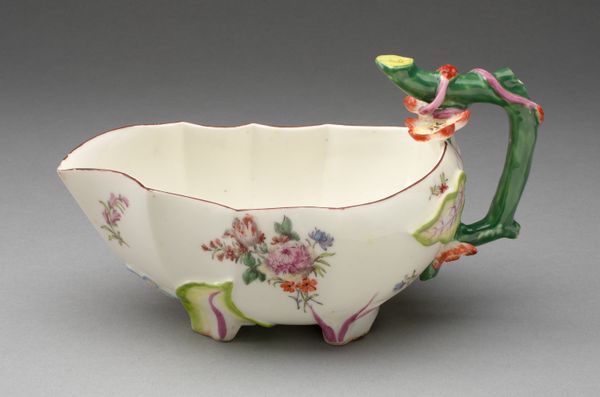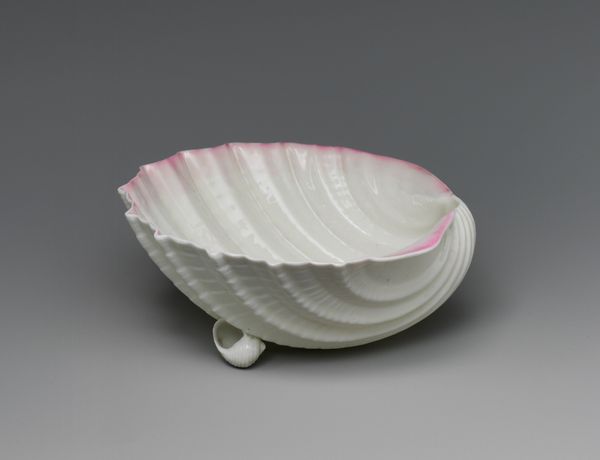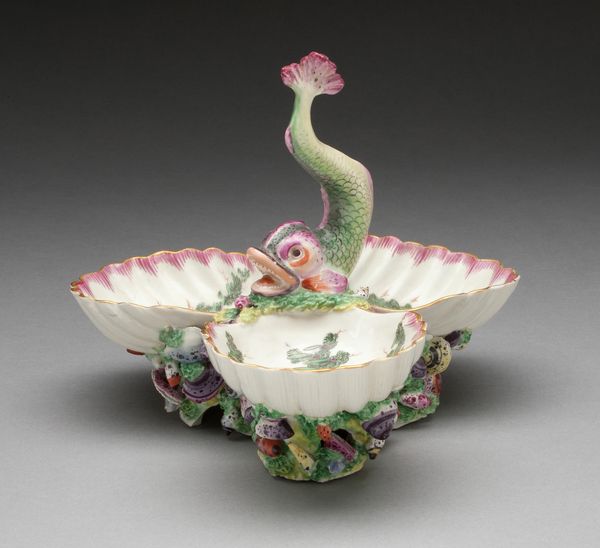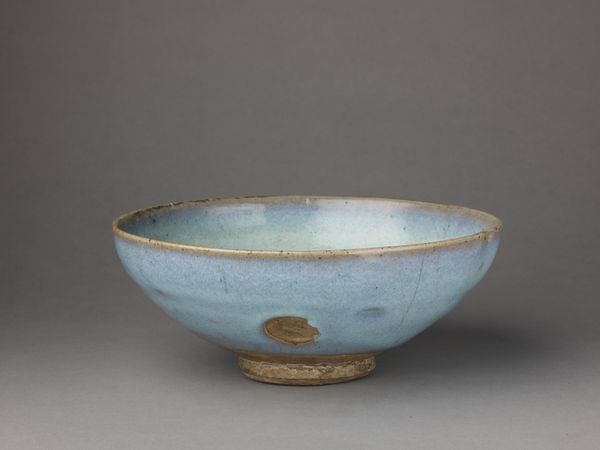
ceramic
#
asian-art
#
ceramic
#
ceramic
#
china
#
islamic-art
#
decorative-art
Dimensions: 2 1/2 x 5 3/8 x 5 3/8 in. (6.35 x 13.65 x 13.65 cm) (overall)
Copyright: Public Domain
This melon-shaped cosmetic box was made by the Tuan Family Workshop, masters of the ceramic arts. The box is formed from delicate porcelain, a material prized for its purity and translucence. The subtle celadon glaze, with its soft, jade-like color, is achieved through a complex firing process, demanding precise control of the kiln atmosphere. Look closely at the form. The box's lobed exterior mimics the surface of a melon, its gentle curves and rhythmic indentations creating a tactile and visually appealing design. The interior is divided into compartments, thoughtfully designed to hold various cosmetic items. This level of detail suggests that the piece was likely made for a discerning clientele, who appreciated both beauty and functionality in their everyday objects. Such objects demonstrate the extraordinary skill involved in ceramic production, a labor-intensive process requiring expertise in clay preparation, molding, glazing, and firing, and reveal the ingenuity of artists working within workshop traditions. Appreciating the skill and material involved allows us to move beyond traditional distinctions between fine art and craft.
Comments
minneapolisinstituteofart almost 2 years ago
⋮
Shaped in the form of a flattened melon, this lidded box is set on the interior with a large central flower bud from which issue three branches each with furled leaves and buds interspersed with three small rounded containers presumably for cosmetics. Boxes such as this, as well as seal-ink and multifunctional lidded boxes, were produced in great quantity at Yingqing kilns during Southern Song and Yuan periods. The most refined of these utilitarian wares would have appealed to the educated elite and aristocratic women of China, but a great quantity were made for burial as well as exported to Korea, Japan, and Southeast Asia. The dense white body and glossy glaze seen here are characteristics of Jingdezhen ware and it is most likely that this box comes from that center in Jiangxi province. The sunken base is molded with a reverse maker's mark reading: duan jia he qi, "Box made by the duan family." More than a dozen different makers are recorded on ceramic boxes suggesting that numerous small family kilns, specializing in certain types of ware operated at Jingdezhen.
Join the conversation
Join millions of artists and users on Artera today and experience the ultimate creative platform.




